Experiencing safari - nature's biggest treasure hunt - is most children's dream. Just an hour's flight from Johannesburg, Esiweni Lodge has all the ingredients for the perfect safari: beautiful savannah landscape, the Big Five and pampered seclusion. This blog follows the experience of one tribe of four heading from London to the plains of KwaZulu-Natal in South Africa for a family-friendly safari in South Africa.
TUESDAY
GANDHI'S GARDEN, JOHANNESBURG
Heading from London to Nambiti, this is Sarah, 9, and 14-year-old Tom's first trip outside Europe. Within 12 hours, these siblings have already experienced the airport lounge, their first A380 flight and a fast-track trip through customs. This morning, freshly off the plane in Johannesburg, their private driver takes them to a temple to simplicity, Satyagraha House. Sheltered from the sounds of the city by an enclosed garden full of magnolias and two centuries-old Pride of India trees, stands a white house with a rondavel (traditional African round houses) design. It was here, under a thatched roof, that Mohandas Gandhi lived in 1908. Today, Satyagraha House is a guesthouse and place of remembrance, with the adjacent small cottage reserved for the family. The decor is clean and crisp, featuring organic hues and decorative objects. A fire crackles in the grate, and any post-flight fatigue melts away during a delicious massage followed by a family meditation session and a vegetarian lunch in the lush garden. On the way from the living room to the mezzanine there is an exhibition tracing Mahatma's journey. It tells the story of one of his 21 years in South Africa, often forgotten, during which the father of Indian independence created his philosophy, satyagraha (Sanskrit for 'strength of truth'). It's the perfect introduction to South Africa, steeped in serenity.
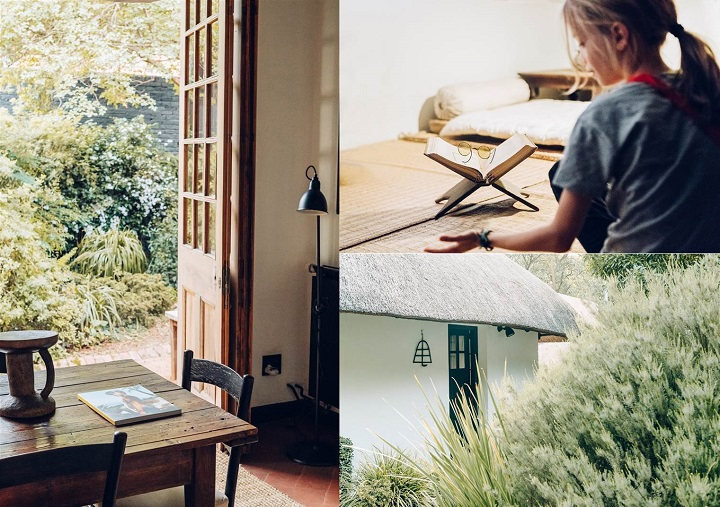
WEDNESDAY
DESTINATION NAMBITI
Time to move onto the next location. The small Cessna 402 takes off, leaving the tarmac of Grand Central Airport behind for Durban, south-east of the Nambiti Reserve. The flight lasts an hour, through a sky filled with cotton wool clouds. Out of the windows to the right the family can see the black ridges of the Drakensberg, the so-called ('Dragon Mountains'). A palette of ochre and khaki stretches out before their eyes. Then a first pass to 'clear the runway' (to encourage any animals that might be on it to move away), and finally the twin-engine plane lands. The family-friendly South Africa safari adventure continues here, between the grassy airstrip and Esiweni Lodge, their luxury base camp. Nambiti is a private reserve of about 22,000 acres, ten-times smaller than Kruger, the country's first national park, but with less crowded trails.
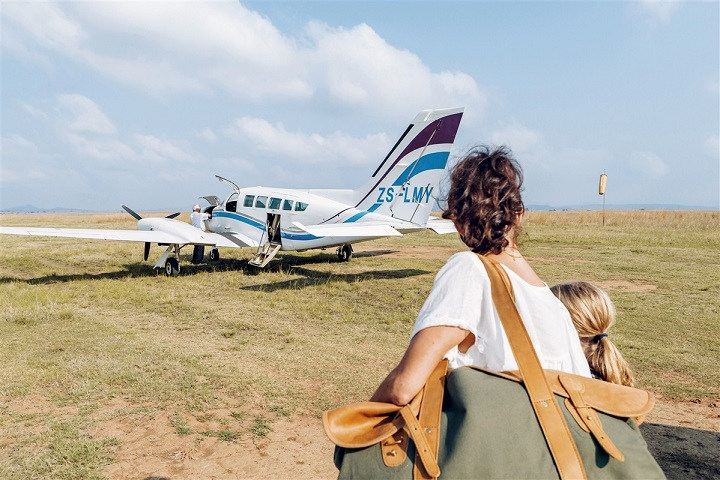
The family now have five days to meet the Big Five, the superstars of the savannah: elephants, rhinos, buffaloes, lions and leopards. Pemba, the ranger, has a beaming smile twenty years of experience in the bush and the uncanny ability to keep the children enraptured all the time. While everyone regains their composure, they are invited to climb on board the game viewer, a large 4x4 with an open and elevated cabin to offer passengers a better view of the wildlife ('game' in safari language) and the area's landscapes away from the usual tourist routes. Located halfway between Durban and Johannesburg, this area had a big part to play in the country's history.
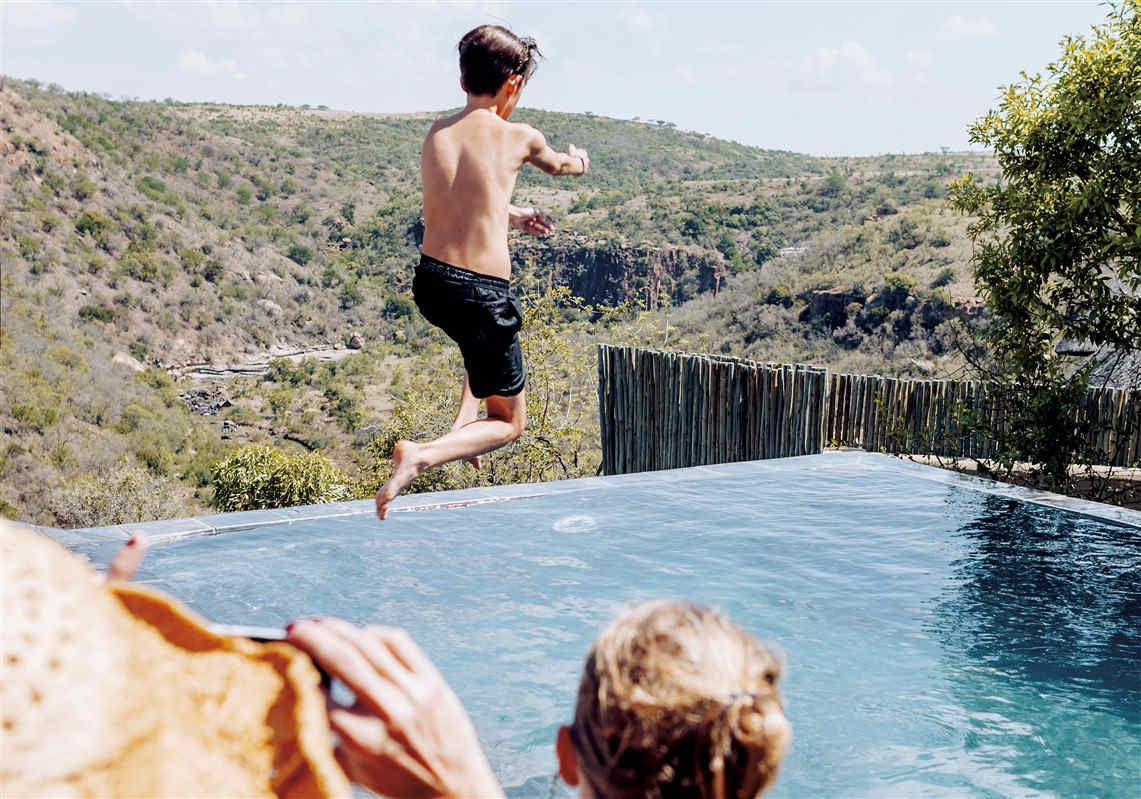
These large savannah plains dotted with kopjes (imposing granite headlands) were first crossed by the San – the first inhabitants of southern Africa – before being the scene of the battlefields on which the Boers, English and Zulus fought each other at the turn of the 20th century. One hundred years later, in 2000, the diversity of these wild landscapes caught the attention of Rob le Sueur and Gordon Howard, who bought land from a handful of farms to create Nambiti's private reserve.
The animal population of Nambiti is gradually being reintroduced and now has about 40 different species of mammals. The variety of wildlife and landscapes gives it the nickname 'Little Masai Mara', a miniature version of Kenya's most famous reserve. Even without the Big Five, the game density per square foot is high, and the odds of having a good encounter are guaranteed.
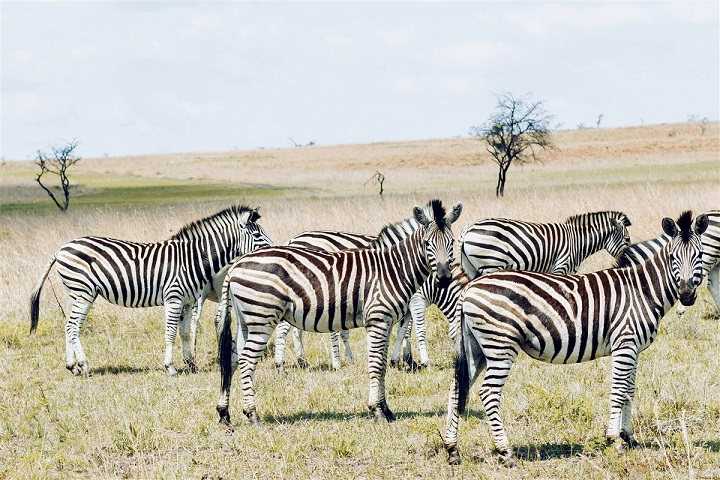
THURSDAY
1st GAME DRIVE
Everyone sitting comfortably? Then we'll begin. It's important to be comfortable actually, because with two game drives a day (five to six hours total), this car will be a second home for the next few days. Just two minutes and there has already been some excitement: 'There, it's Pumba!', says Dad, pointing to a family of warthogs scooting around. Everybody laughs. The trail runs past the 'green hills of Africa'. There's an introduction to the great legends of the African savannah, previously told by the likes of Hemingway, Kessel and Disney, and now brought up to date, while everyone's faces watch and listen in wonder. Suddenly the ranger switches off the engine.
He hands the binoculars over to Sarah. Over there, under the acacias: her first giraffe. With grace, the animal stretches upwards to nibble on some tender foliage. 'That's got to hurt its neck!' Sarah thinks aloud. The epitome of elegance, the mum walks over with her rolling gait to join her little one (there's an avalanche of oohs and ahs, and a riot of superlatives: 'so cute, so beautiful, so amazing... '). In a typical giraffe pose (with both front legs apart), she leans over and grabs an abandoned scapula bone. Everyone is astonished. 'She chews it to get the calcium she needs,' Pemba says.
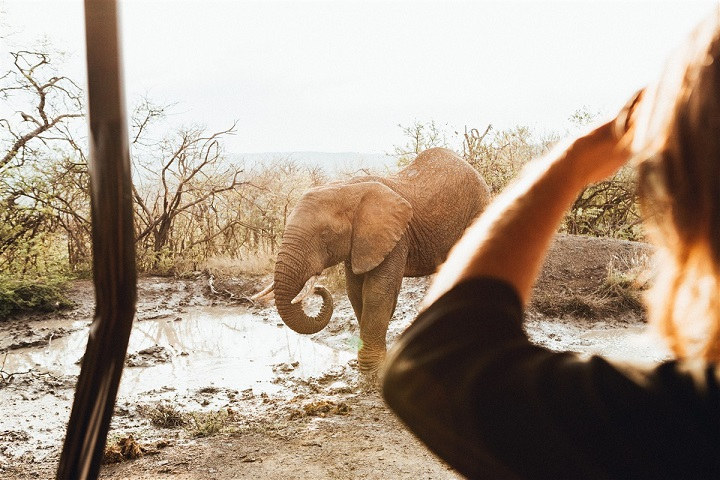
The 4x4 restarts. On board, they're already on the lookout for some new faces. Sarah has pulled out a somewhat incongruous magnifying glass and, despite the bumpy ride, is watching the savannah through it as the car moves. Other species are waiting in plain sight at the edge of the road: kudus with corkscrew horns; impalas whose natural 'M' tattoos on their hindquarters are reminiscent of a certain famous hamburger chain; clumsy-looking wildebeest – a mixture of antelope, buffalo and hyena, says the legend – but whose excellent senses (sight, smell and hearing) make them an unparalleled ally for spotting the enemy.
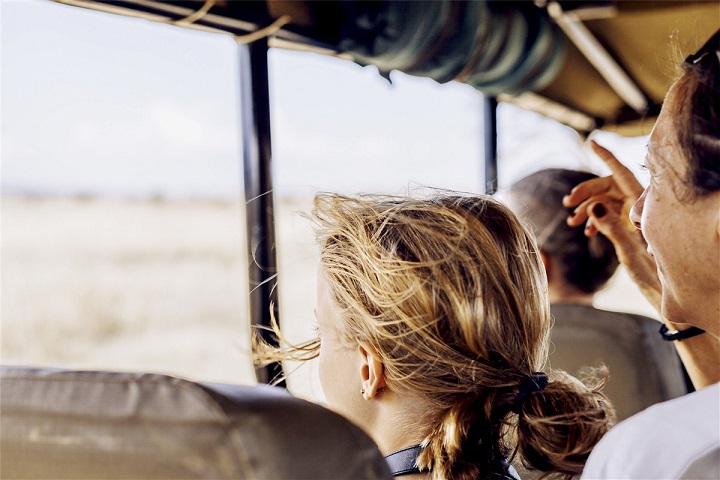
Zebras with their mohawk hairstyles and stripy skin rely on this optical effect to deceive their attackers. Pemba brakes again, spotting an imposing dark mass on the horizon. A rock? No, a black rhino grazing peacefully. Despite the distance, the power of the animal is obvious. 'Are we going over there?' asks one of the passengers, a little worried.
Pemba smiles and leads the team toFalcon Point, a stunning viewpoint overlooking the savannah, to watch the dazzling sunset. Getting to the end of their game drive, the 4x4 heads towards Esiweni, a Zulu word meaning 'edge of the cliff'. Sophie Brown and Ben Carter felt at the edge of a life cliff when they decided to swap their London life for a South African adventure in the form of a luxury lodge.
FRIDAY
ELEPHANT TIME
'Good morning!' It's 5:00 am, and Pemba is knocking on the door. Between the thunderstorm rumbling in the canyon, the lightning illuminating the bedroom and the (harmless) spiders on the walls, the residents of the two rooms quickly found themselves under the same mosquito net, so sleep was in short supply. Despite their wild hair and sleepy eyes, everyone is delighted at the idea of another game drive. The Esiweni Lodge owners are getting ready to drive their daughter, Adele, to school in Ladysmith, but the drive is not exactly your school run: during the hour's drive, the little girl spends her time counting giraffes.
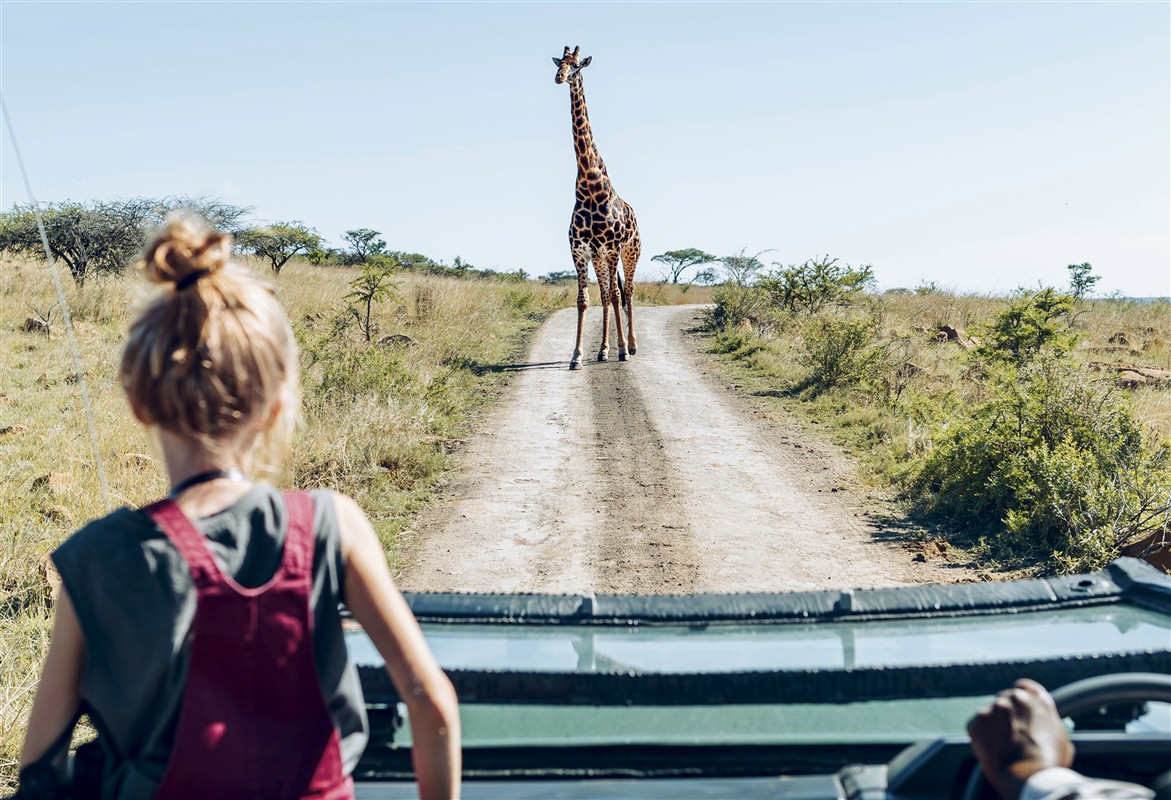
Living by the rhythm of the sun, away from any form of pollution, forgetting the feeling of having to race against the clock on a daily basis, matching the pace of the animals, being active in the morning and at the end of the day and taking a siesta during the heat of the afternoon is, alongside observing the Big Five, what people come for in this faraway corner of the savannah. “Total disconnection”, insists Sophie, justifying the lack of telephone network and a limited WiFi signal (meanwhile the teenager of the family is feeling slightly less positive about the situation). The simple pleasure of doing nothing is sometimes a forgotten art form. 'Reading Tolstoy in the morning, going on a safari in the afternoon, that's the way to live', says Ben.
As for those who like to exercise, the reserve imposes a few common sense rules. To the father of a family cross at not being allowed to do his morning jog, the owners simply reply: 'you are the slowest animal here.' 'Only food runs', says Sophie, recounting an unfortunate encounter with a lioness as she moved away from the 4x4 to take a photo, which she escaped by retreating on her tip-toes. As such, leaving the authorised perimeter is to be avoided; not everyone has Zeus and Apollo, Adele's two Jack Russell bodyguards, to help scare off the snakes.
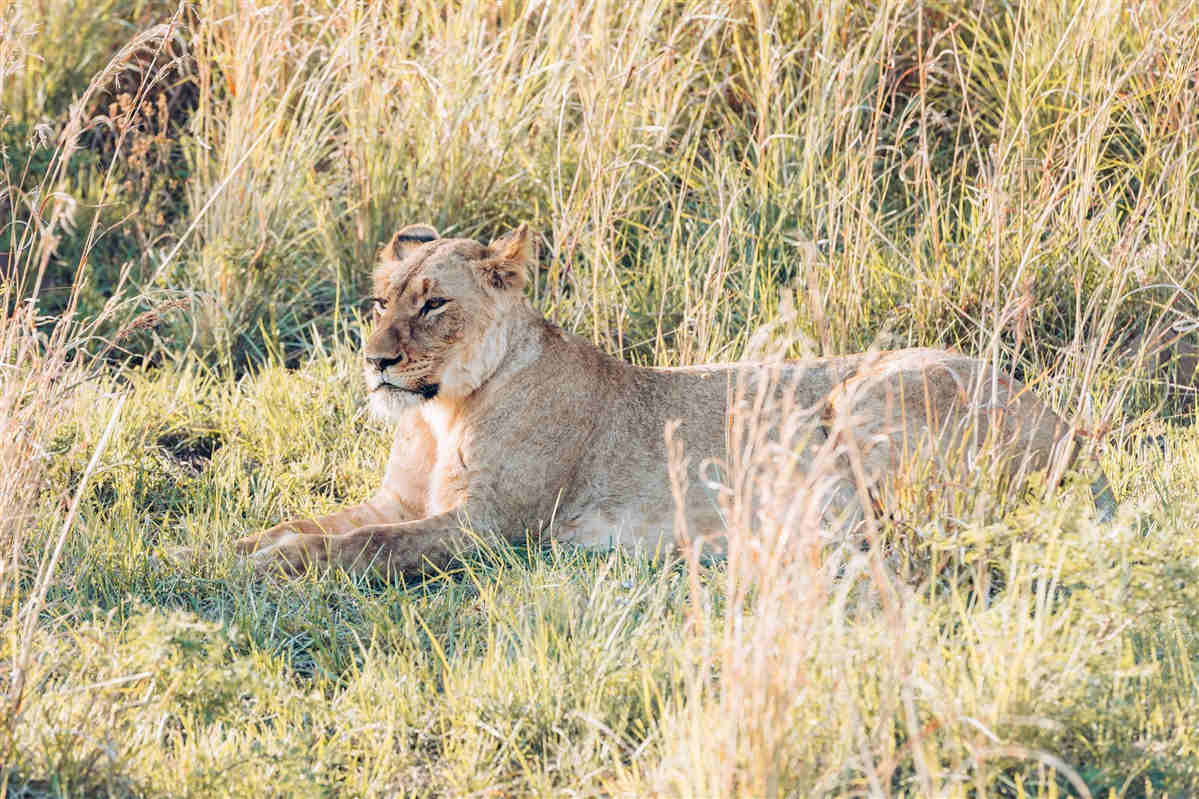
4x4 it is, then. In spite of the winter sun, at an altitude of 3,940ft thick blankets are definitely needed. The first sunlight starts to peak over the hills. Suddenly, as the car approaches a watering hole, the family catch a lioness standing on a ridge, joined soon after by two sidekicks. 'They are hunting', says Pemba. A strangled cry confirms it. A female kudu is running away. She will not be breakfast this morning. Disappointed, the three lionesses walk towards the open cabin of the 4x4, the occupants of which collectively hold their breath. Pemba doesn't seem worried: 'animals see the vehicle as a big, unknown shape, they won't risk attacking it. You just have to avoid moving too much, talking, and above all the ranger has to be careful not to get in their way.' The occupants of the 4x4 trust his experience and instinct to analyse the animals' behaviours.
Then they're off, the trail running across huge blonde plains, before climbing again. In ranger mode, Pemba spots a dropping, but it is a bit old. Then suddenly, they are right beside them. About twenty elephants of all sizes, moving parallel to the narrow trail. The car stops close by. A huge male with his defences down exchanges a dark but peaceful look with the passengers. They all continue their bath, blowing loudly from their trunks, showering themselves with water and rolling in mud, before calmly walking away. An elephant calf follows his mother as the passengers look on, misty-eyed. The encounter only lasted a few minutes, but felt like an hour.
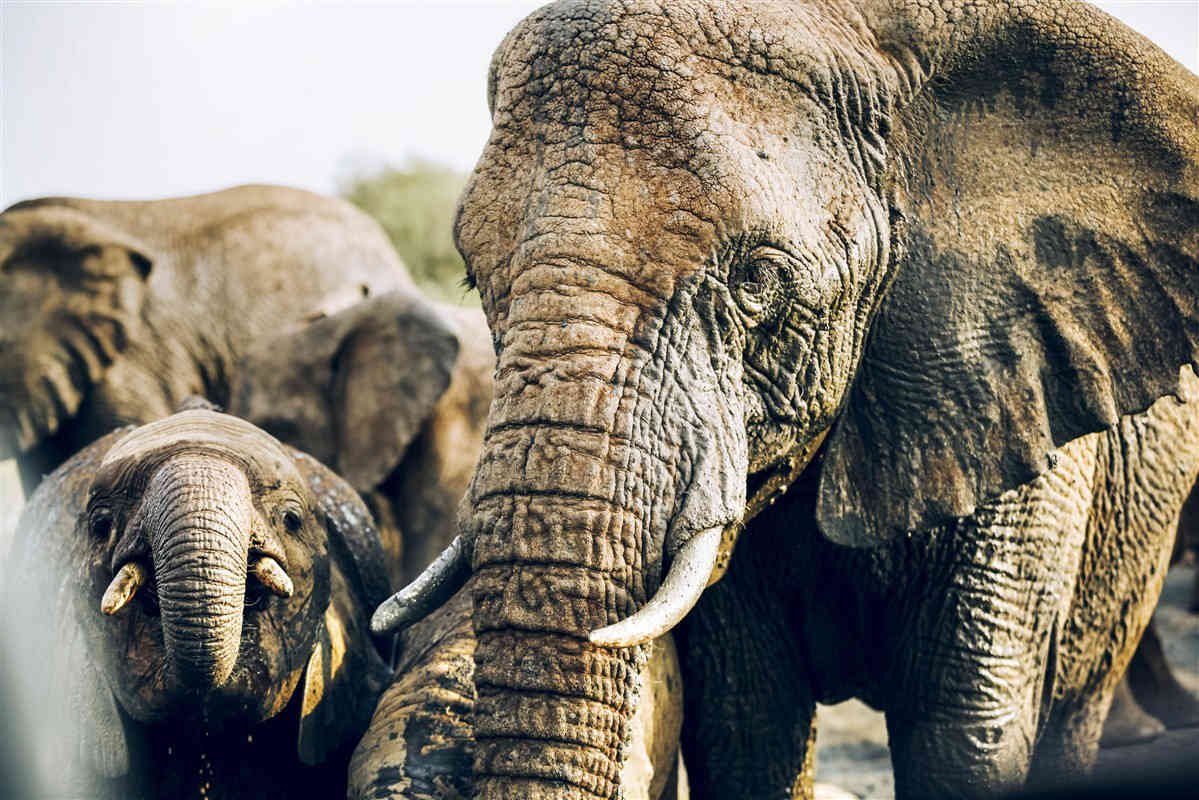
SATURDAY
FINAL CHEETAHS AND THE BUSH BAR
This morning, the final day of this family safari in South Africa, Pemba is in a hurry. A voice on the radio announces a rare sighting. The untrained eye struggles to distinguish the slender silhouette. Enter the Usain Bolt of the animal kingdom: it's a cheetah, one of the kings of the plain, but now threatened with extinction. Nambiti has only two individuals in the reintroduction phase. 'Faced with habitat destruction, cheetahs simply stop breeding. And then they become easy to tame, to their own detriment. Billionaires in the Middle East are fans', laments Ben.
There are ten lodges in Nambiti, which are jointly responsible for keeping the animals safe, fence and trail maintenance (Adele Avenue will soon connect Esiweni to the south end of the reserve), and working to get the leopards used to a human presence. Long hunted by unscrupulous heads of state and sangoma (witch doctors) for the status they embody, leopards have become like nocturnal ghosts. After the buffaloes they saw this morning, it will be the only one of the Big Five missing from Tom and Sarah's list.
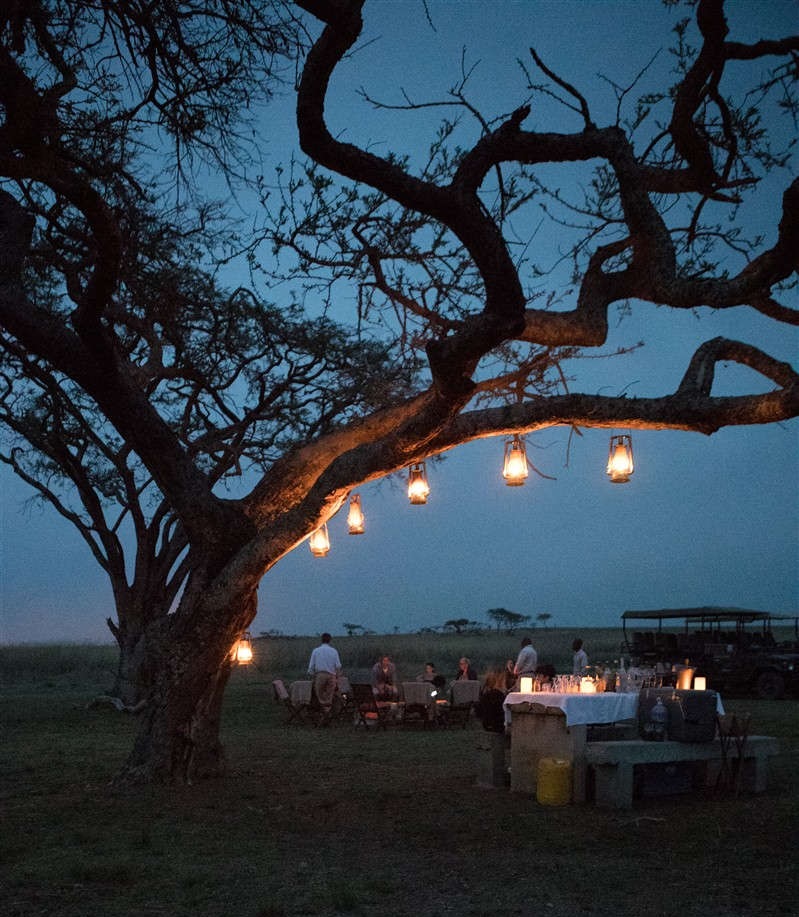
Tonight, the Bush Bar is hosting a final drink around the boma, a traditional campfire, under a star-filled sky. Sarah falls asleep by the fire, her head full of dreams of the savannah. Tomorrow she will return home with her junior ranger cap.
The air taxi takes the family back to Johannesburg, searching for Big Five-shaped clouds on the way. There's still time for one last safari, but in the city this time, in the trendy areas of Maboneng and 44 Stanley. It's been a smooth return to civilisation, while a quote from Gandhi on the walls of Satyagraha House echoes the family's trip. His adventure also began on the plains of KwaZulu-Natal and ended in Johannesburg: 'Honestly, it was after my time in this country that I became who I am today.'
By
Baptiste Briand
Photographs by
Olivier Romano
